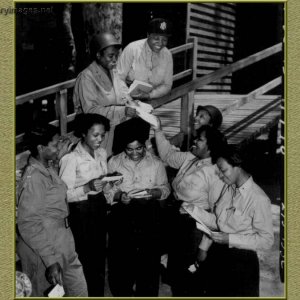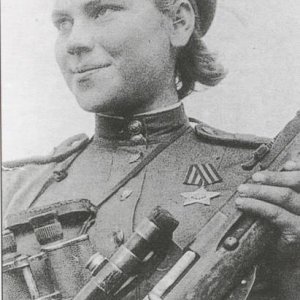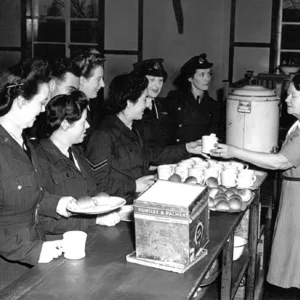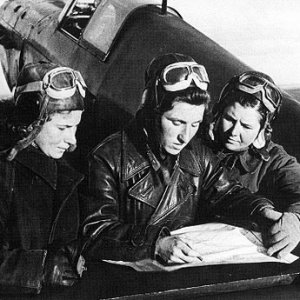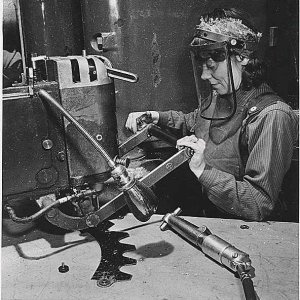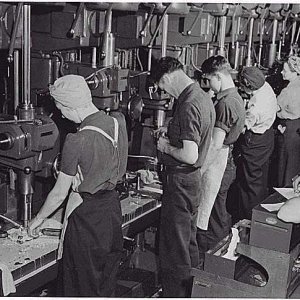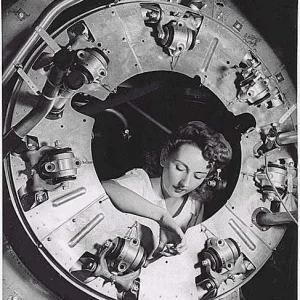- Joined
- Apr 2, 2017
- Messages
- 39,083
- Points
- 463
The Women’s Timber Corps was founded in 1942 to provide the UK with timber. Known as “Lumber Jills,” these women produced the timber necessary for telegraph poles, rails used in the D-Day invasions, and coal mine support beams.
The Home Grown Timber Production Department organized for the women to work in the timber industry to replace the men drafted into the armed forces. They were essentially the British equivalent of America’s Rosie the Riveter.
At the war’s height there were 6,000 women working in the Timber Corps, many from cities who had previously worked as dressmakers, shop assistants, and factory workers. These urbanites proved to be just as efficient with an axe as their rural peers. In fact, there is no evidence suggesting that recruitment for the corps was based on physical ability. Rather, the corps sought women with “enthusiasm, resilience and good humour.”
The Timber Corps was part of the Women’s Land Army which at its peak had 80,000 women on its roster. The Women’s Land Army was formed during the First World War with the aim of reducing the UK’s reliance on imports. The women helped at dairy farms, ploughed fields, and sheared sheep. The press advertised working in the Timber Corps as a way for women to escape the city for a country vacation, showing pictures of bare-armed women in trousers enjoying the sunshine. The press didn’t mention the conditions, such as working at night in the dead of winter, fingers amputated by saws, bronchitis caused by saw dust inhalation, or the women crushed by trees falling in unanticipated directions.
While Lumber Jills received better compensation than their counterparts in the Women’s Land Army, it was not possible for them to quit after starting. In some ways, they were treated similarly to the prisoners of war assigned to work in the timber industry. There was even a point of contention when the prisoners received new boots before the women.


Land Army girl Vera Howson at the Women’s Timber Corps training camp.

Land Army girls sawing larch poles for use as pit props.

Land Girls using a double saw to cut down a tree as part of their training at the Women’s Land Army camp in Culford, Suffolk in 1943.

Women’s Land Army Forestry Training, Culford, Suffolk, 1943

Two Land Army girls sawing timber into lengths for pit props at the WLA training centre at Culford, Suffolk during 1942.
The Home Grown Timber Production Department organized for the women to work in the timber industry to replace the men drafted into the armed forces. They were essentially the British equivalent of America’s Rosie the Riveter.
At the war’s height there were 6,000 women working in the Timber Corps, many from cities who had previously worked as dressmakers, shop assistants, and factory workers. These urbanites proved to be just as efficient with an axe as their rural peers. In fact, there is no evidence suggesting that recruitment for the corps was based on physical ability. Rather, the corps sought women with “enthusiasm, resilience and good humour.”
The Timber Corps was part of the Women’s Land Army which at its peak had 80,000 women on its roster. The Women’s Land Army was formed during the First World War with the aim of reducing the UK’s reliance on imports. The women helped at dairy farms, ploughed fields, and sheared sheep. The press advertised working in the Timber Corps as a way for women to escape the city for a country vacation, showing pictures of bare-armed women in trousers enjoying the sunshine. The press didn’t mention the conditions, such as working at night in the dead of winter, fingers amputated by saws, bronchitis caused by saw dust inhalation, or the women crushed by trees falling in unanticipated directions.
While Lumber Jills received better compensation than their counterparts in the Women’s Land Army, it was not possible for them to quit after starting. In some ways, they were treated similarly to the prisoners of war assigned to work in the timber industry. There was even a point of contention when the prisoners received new boots before the women.
Land Army girl Vera Howson at the Women’s Timber Corps training camp.
Land Army girls sawing larch poles for use as pit props.
Land Girls using a double saw to cut down a tree as part of their training at the Women’s Land Army camp in Culford, Suffolk in 1943.
Women’s Land Army Forestry Training, Culford, Suffolk, 1943
Two Land Army girls sawing timber into lengths for pit props at the WLA training centre at Culford, Suffolk during 1942.




